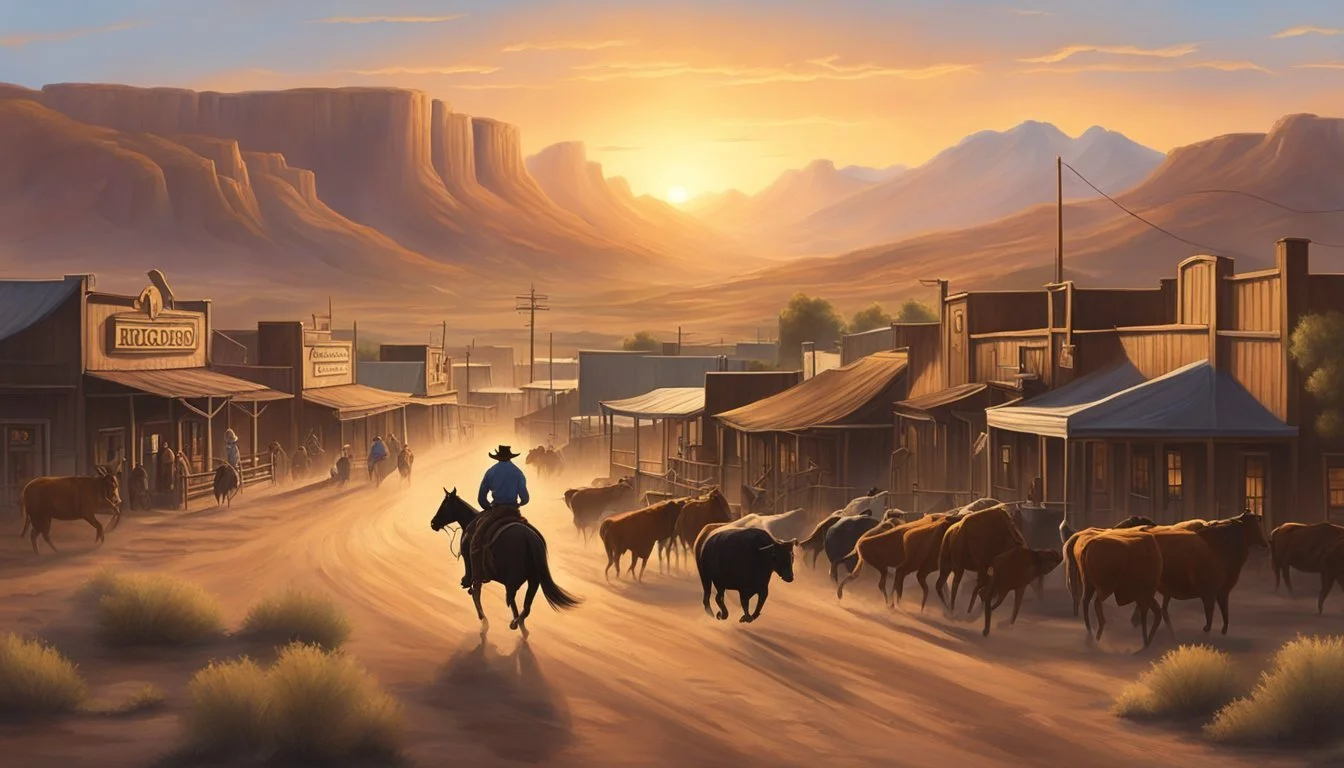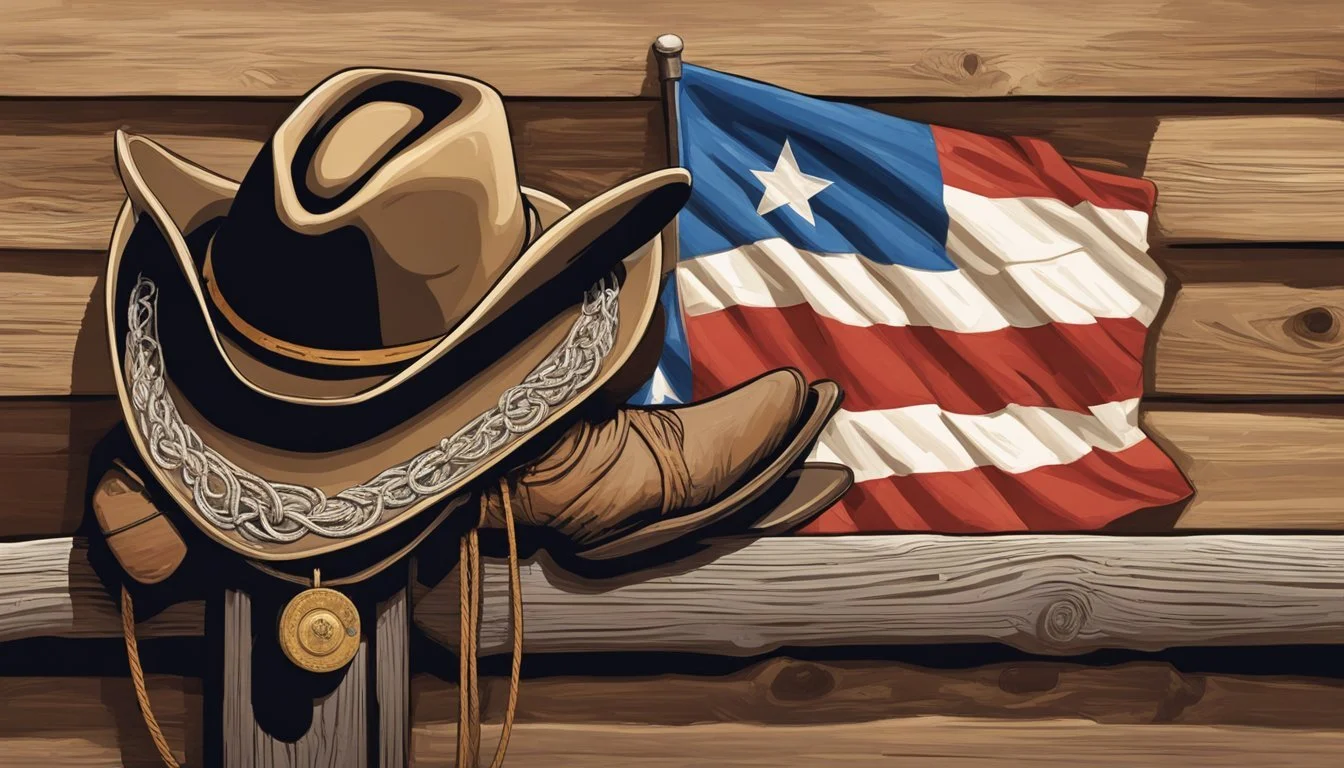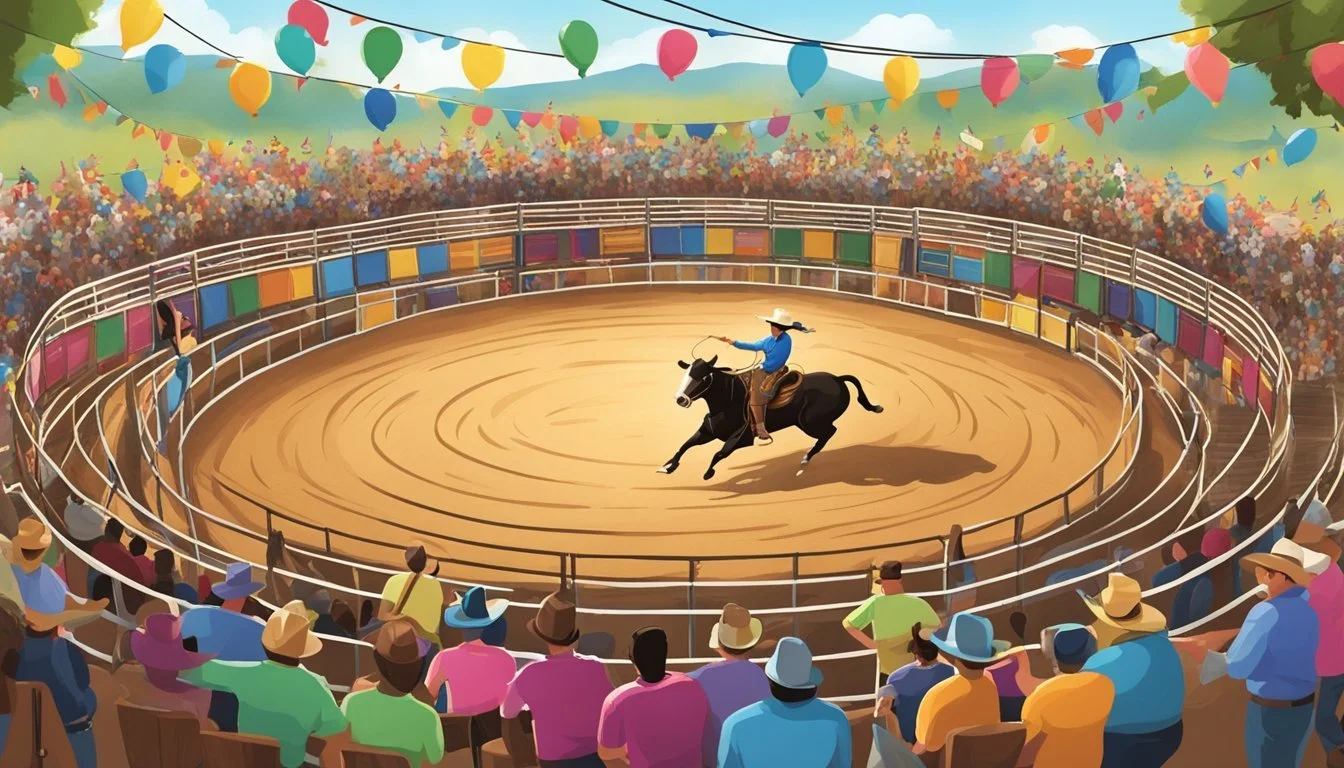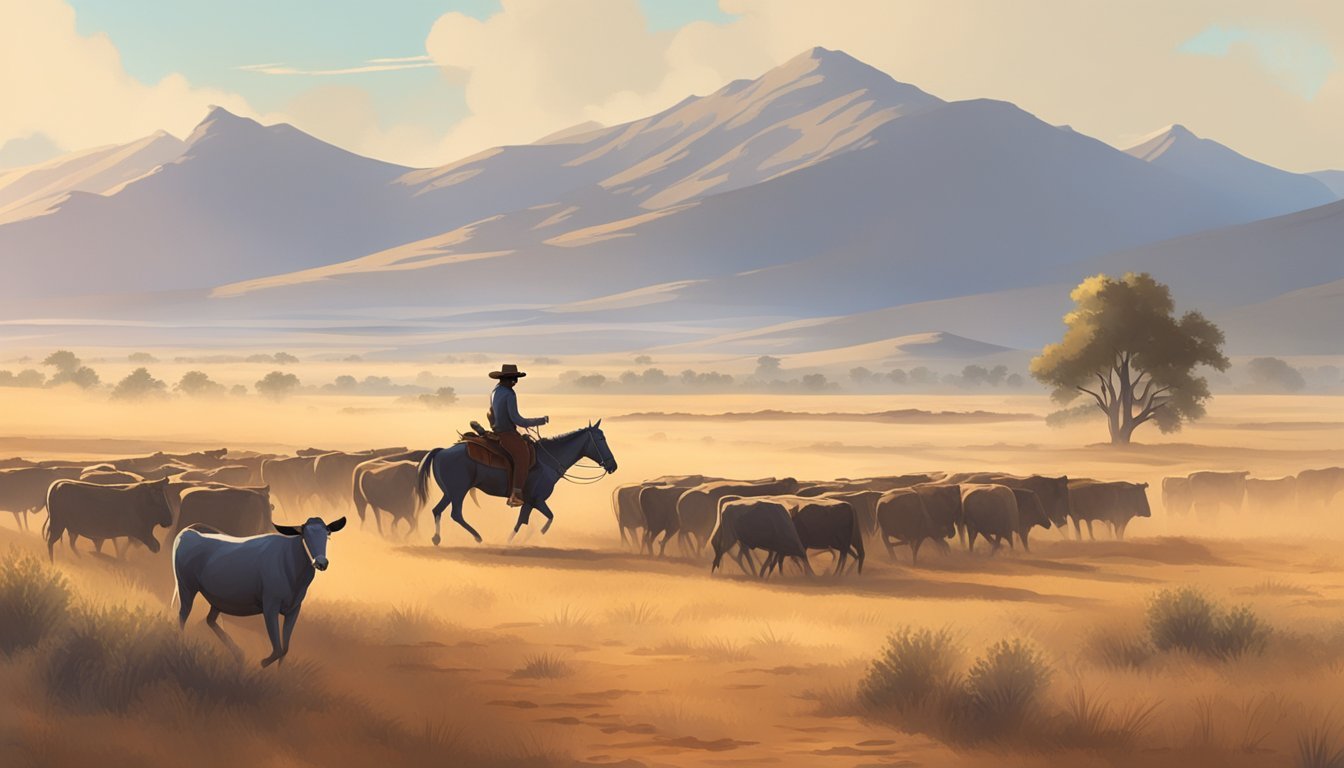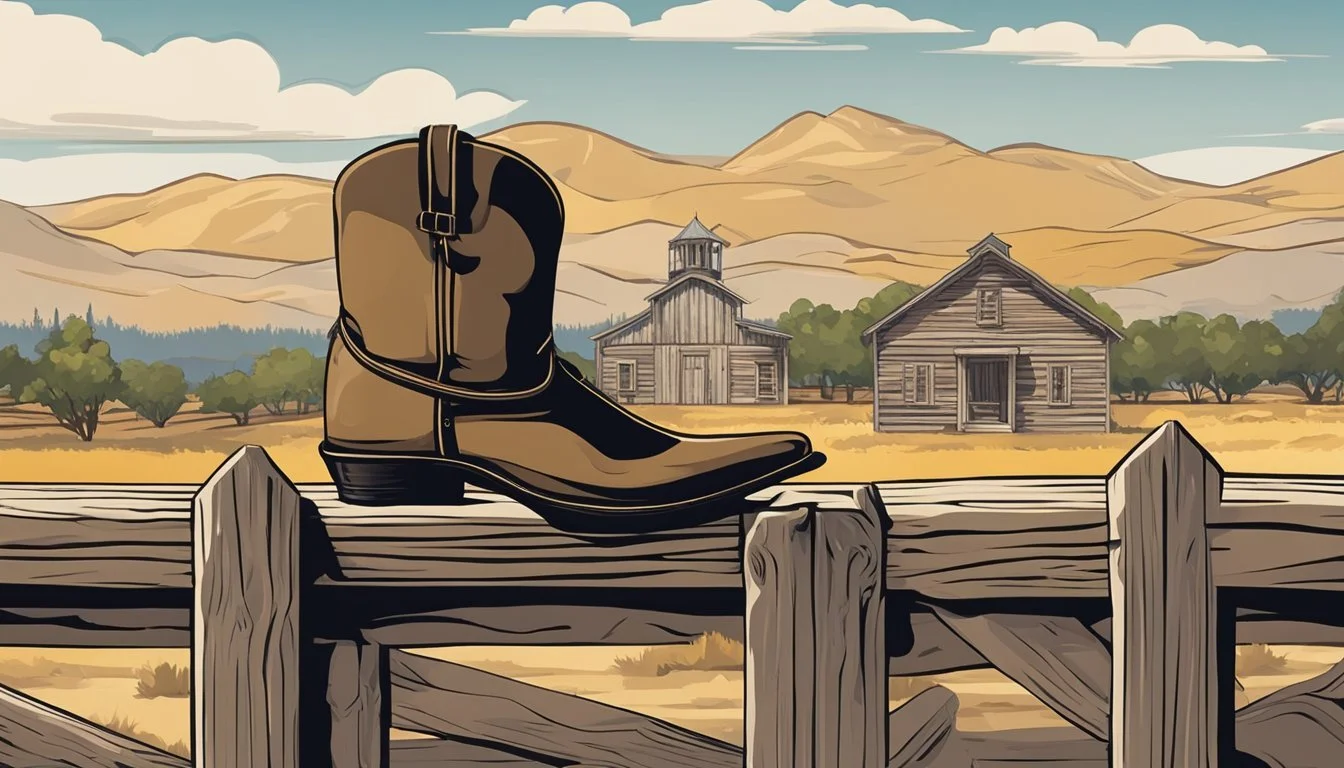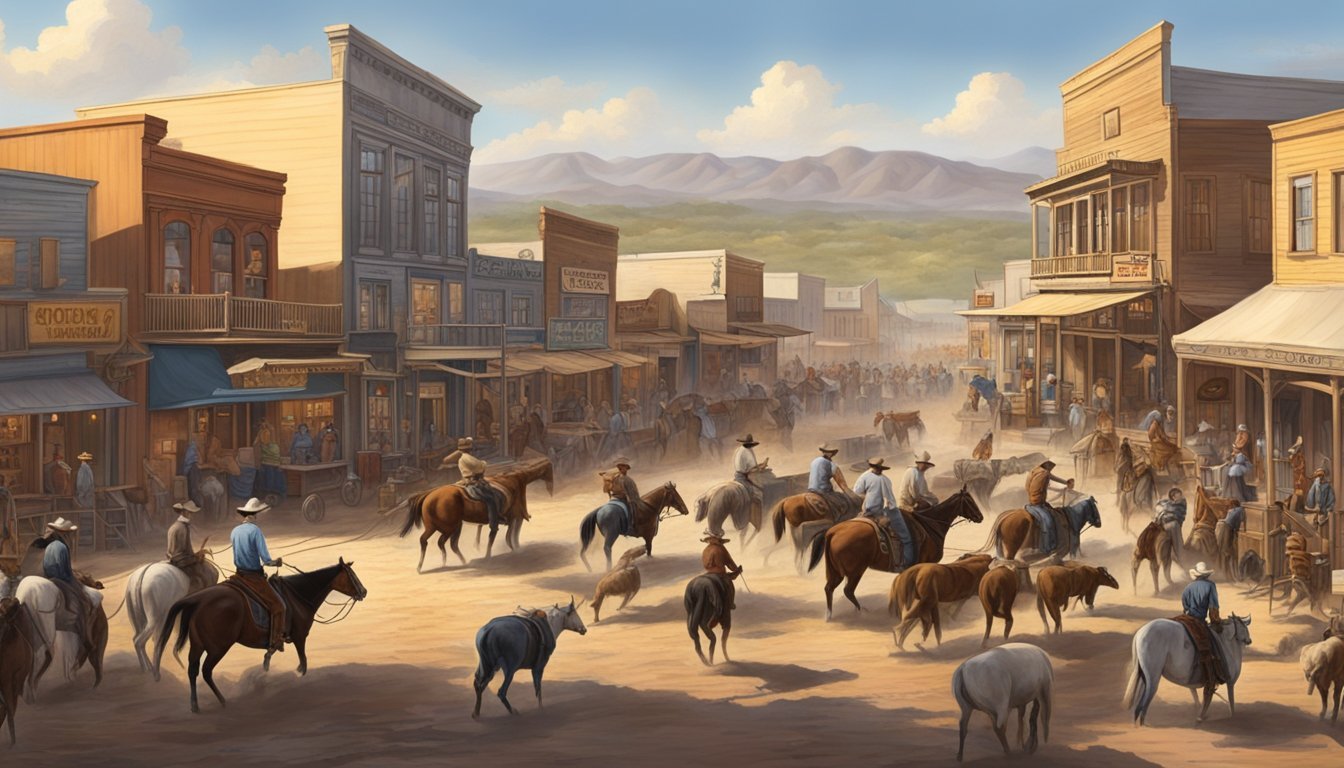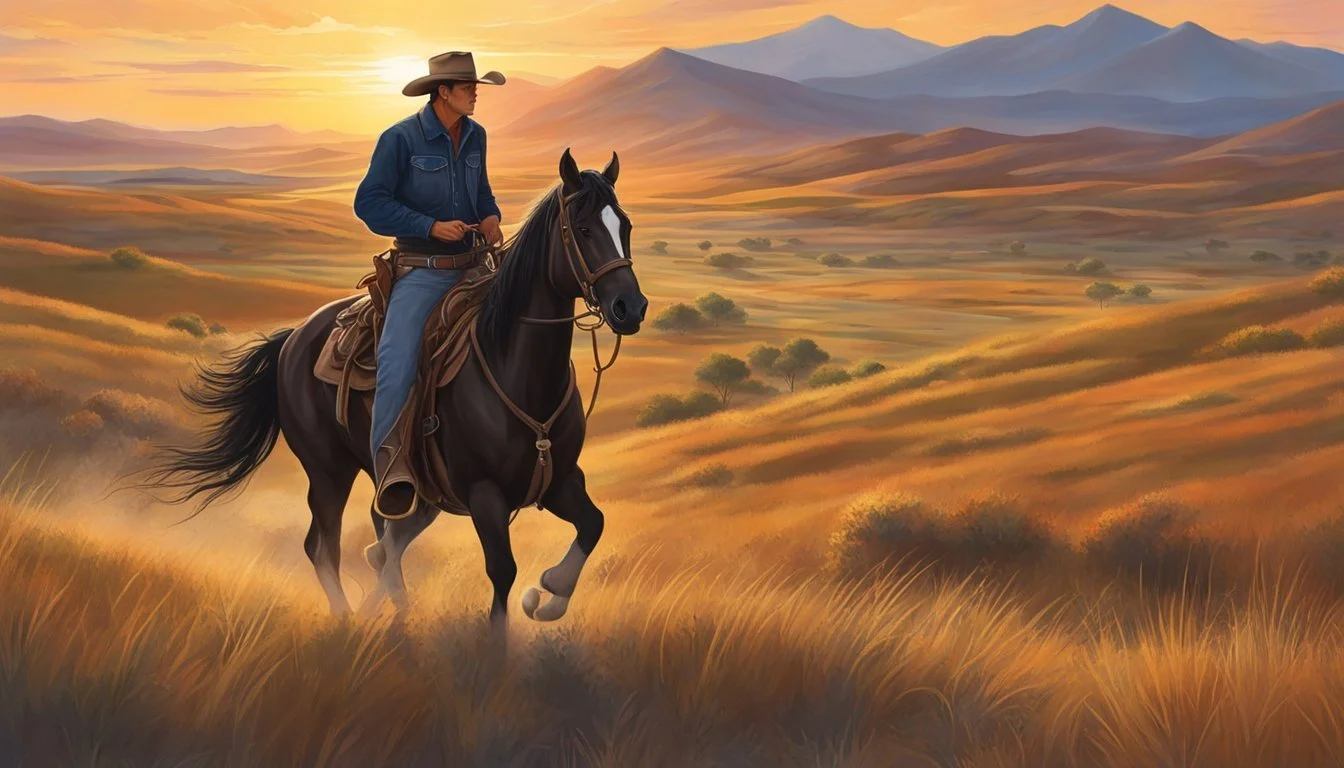The Texas Cowboy's Guide to Premier Western Themed Exhibitions
The allure of the Old West continues to captivate people globally, with Texas standing at the crossroads of this enduring legacy. The state harmonizes its vast landscapes with the spirit of the cowboy, a personification of resilience and adventure that has come to define much of the American West. With a storied history that includes icons such as the Texas Rangers and legendary cattle drives, Texas provides a unique window into the western past that is both educational and entertaining.
To truly immerse oneself in the Texan cowboy experience, there are a variety of western-themed exhibitions and attractions that bring the dusty trails and lively saloons of yesteryear back to life. From historic ranches that offer a hands-on experience of ranch life to museums that house rare artifacts from the frontier days, these venues serve as portals to another time.
Visitors can start their journey back in time at places like the Buckhorn Saloon and Texas Ranger Museum in San Antonio or at the annual exhibition of the Cowboy Artists of America in Fort Worth, which showcases the finest in western art. In Bandera, the "Cowboy Capital of the World," ranches like Dixie Dude Ranch give guests an authentic taste of western hospitality and the cowboy way of life. These attractions and events provide an intriguing look into the cultural heritage of Texas, ensuring that the cowboy's place in American history is both preserved and celebrated for generations to come.
Evolution of Cowboy Culture
The Texas cowboy scene is a tapestry of traditions and influences, shedding light on the roots of American cowboy heritage and the practices that define its culture today.
Origins of the American Cowboy
The American cowboy emerged from a blend of Old World techniques and the harsh realities of frontier life. It was the open ranges of Texas, vast and demanding, that gave birth to the distinctly American image of the cowboy. They were the rugged handlers of cattle herds, living embodiments of independence and resilience. Early cowboys adapted Indigenous methods and gear, but it was their relentless spirit that solidified their place in the nation's lore.
Influence of Vaqueros and Ranching
Vaqueros, Spanish for cowboys, were the skilled horsemen from Mexico who brought their knowledge to the ranches of Texas. The techniques in ranching and herding cattle that they introduced became integral to the development of cowboy culture. Tradition held in high regard, the vaquero's attire, lassoing skills, and round-up methods greatly influenced the American cowboy heritage. Without the vaquero impact, Texas cowboy culture wouldn't have its rich, distinct identity.
Iconic Cowboy Symbols and Apparel
Texas cowboy attire isn't just for show; it's steeped in practicality and tradition, merging function with symbolic cultural significance.
The Significance of the Cowboy Hat
The cowboy hat, originating in the mid-1800s, is perhaps the most recognizable symbol of Texas culture. Functionally, it provided protection from the sun’s harsh rays and could serve as a makeshift water receptacle for horses. The design of the hat drew inspiration from the Spanish sombrero, modified for the needs of the vaqueros and their frontier lifestyle.
Material: Usually made from felt, straw, or leather.
Brim Shape: Designed to shield the face and neck from the sun.
Crown: Tall to allow for air circulation, keeping the head cool.
Ranch Wear and Accessories
Beyond the hat, traditional ranch wear is designed for the rugged work of the cowboy.
Boots: High and sturdy to protect against snake bites and brush.
Chaps: Leather leg coverings shield against thorny shrubs and help in horse riding.
Gloves: Protect hands from rope burns and barbed wire.
Accessories such as bandanas serve practical uses, for instance, filtering dust or mopping sweat. Belts often feature large, ornate buckles that reflect personal achievements or affiliations and denote a cowboy's pride in their work and heritage.
These wearable items aren't just clothes; they're tools and symbols of a proud Texas tradition.
Historical Significance of Texas in Cowboy History
Texas played a critical role in the development of cowboy culture, primarily through its cattle drives and the emergence of key urban centers that supported the cowboy way of life.
The Role of Cattle Drives
Cattle drives were pivotal in shaping the cowboy heritage in Texas. Beginning in the early 1800s, longhorn cattle, known for their resilience, were driven from Texas to markets in the North and East. This was a time before the railroad network penetrated Texas, and drovers were required to move herds overland for hundreds of miles across challenging terrain. The cattle drives not only supplied beef to a growing country but also established the cowboy as an icon of the American frontier.
Key Routes: Chisholm Trail, Goodnight-Loving Trail
Major Players: Cattle barons like Richard King
Notable Events: Cattle drives burgeoned post-Civil War, spurred by high demand in the North
Emerging Cowboy Cities: Fort Worth and San Antonio
Fort Worth and San Antonio became influential as centers for the cowboy experience during the cattle drive era. Fort Worth, strategically located on the Chisholm Trail, acquired the moniker "Cowtown" as cowboys gathered there during cattle drives, making it a hub for supplies and commerce. By the end of the cattle drive era, it developed into a major livestock market with the advent of the railroad, enhancing its reputation and economy.
Fort Worth: Development of the Fort Worth Stockyards in the late 19th century
San Antonio: Transitioned from a cattle ranch center to a bustling city, where the vaquero tradition blended with the American cowboy culture
These cities embraced their heritage, preserving historical sites and hosting events that celebrate the enduring legacy of the Texas cowboy.
The Rodeo and Entertainment
Rodeos in Texas offer a vibrant combination of athletic competition and entertainment, showcasing the skills and traditions of the American cowboy. These events serve as major attractions across the state, contributing to popular culture and the local economy.
Famous Texas Rodeos
Rodeo Austin: Taking place at the Travis County Expo Center, Rodeo Austin provides a rich blend of traditional rodeo activities and entertainment. Visitors can expect to witness professional riders competing in a variety of events.
San Angelo Stock Show & Rodeo: A cornerstone of Texan heritage, it takes place at the Foster Communications Coliseum, featuring high-energy performances and competitive rodeo events.
Mesquite Championship Rodeo: Known for its professional rodeo events, it celebrates Western life and heritage with family-oriented fun throughout the year.
Tejas Rodeo Company also plays a significant role in promoting the rodeo culture in Texas, by organizing events that contribute to the rodeo scene and enrich the local western heritage.
Rodeo as a Cultural Phenomenon
Rodeo entertainment is not simply a series of competitions; it represents a cultural phenomenon deeply rooted in Texas history. As attractions, these rodeos impact popular culture by:
Depicting the prowess and grit of the American cowboy
Creating a gathering space for cowboy culture enthusiasts
Integrating themed events that educate and engage audiences about traditional Western lifestyle
Texas rodeos, in their function as entertainment hubs, reflect the enduring spirit of the Old West and continue to captivate audiences with their undeniable charm and excitement.
Cowboy Lifestyle and Traditions
Texas cowboys are known for their enduring traditions and lifestyle that revolve around ranch life and cattle herding. Their culture is a tapestry woven from daily tasks and communal customs, with both ranch work and food being key aspects of their identity.
Ranch Life and Cattle Herding
Ranch life represents the cornerstone of the cowboy lifestyle, with daily activities centered around the management and care of livestock. The cowboys of Texas maintain a life structured around the sun’s rise and set, with cattle herding being a primary task. They are skilled in managing herds across vast expanses of the Texas landscape, a craft handed down through generations. Cowboys employ a blend of time-honored techniques and modern methods to drive, round up, and care for cattle, demonstrating a profound connection between the land, the animals, and the cowboy ethos.
Key Skills:
Horsemanship: essential for herding and ranch navigation
Roping: used to catch and manage individual cattle
Livestock management: includes branding, tagging, and ensuring the herd's health
Culinary Traditions: From Beans to Beef
The culinary traditions of Texas cowboys are as robust as the individuals themselves, marked by straightforward yet hearty meals. Mainly consisting of beef, the diet of a cowboy is designed to sustain them through their arduous workday. Beans play a significant role as a staple food, often seen in dishes like chuckwagon beans, cooked over an open fire in the great outdoors. These foods are not only practical for sustenance but also serve as a communal focal point, solidifying the bond between cowboys as they share stories and camaraderie around the campfire.
Typical Cowboy Fare:
Beef-centric dishes: steaks, briskets, and stews
Beans: a variety of recipes, often slow-cooked for flavor and convenience
Cornbread: a common side item, pairing well with beef and beans
Through their dedication to ranch life and the preservation of time-honored traditions, cowboys continue to shape the narrative of Texas, invoking a sense of steadfastness and respect for their enduring way of life.
Cowboys Across Borders
The American cowboy tradition has a multicultural heritage, influenced significantly by Mexican and Native American traditions. This section explores the intricate connections and the representation of this iconic figure beyond Texas.
Connections to Mexican and Native American Cultures
The cowboy, or vaquero, is a figure that seamlessly intertwines Mexican, Native American, and United States histories. Initially inspired by Mexican vaqueros, Texas cowboys adopted many of their practices in cattle herding and horsemanship. These vaqueros were skilled horsemen and cattle-herders who originated from Spain, bringing with them a tradition that heavily influenced cowboy culture.
Another influence comes from Native American cultures, who had their own rich traditions of horse-riding and cattle handling. The interaction between cowboys, Native Americans, and Mexican vaqueros led to a blending of techniques and traditions which shaped the cowboy culture as it is known today. Distinct horsemanship skills exhibited by charros, traditional Mexican horsemen, can also be traced within the rodeo performances demonstrating the shared foundation.
The Cowboy Image Beyond Texas
The image of the Texas cowboy has transcended state lines and even national borders. It is universally recognized and often used to symbolize the essence of the American West. Cowboys embody traits such as resilience, independence, and a strong sense of justice, contributing to their broad appeal. Both within America and internationally, the cowboy has become a cultural icon, representing a way of life that elevates the spirit of freedom and adventure.
Region Influence on Cowboy Culture Representation Mexico Horsemanship, rodeo, ranching techniques Adopted and integrated into Texan cowboy culture Native America Livestock management, environmental knowledge Influences seen in rodeo and cowboy ethics International Symbol of American West, freedom Romanticized in media, fashion, and lifestyle
Through cinema, television, and literature, the cowboy has been portrayed in various ways, reinforcing and sometimes evolving the traditional image. Their continued impact on fashion, music, and entertainment across different cultures underscores the transcultural connection of the cowboy legacy.
Cowboy Legacy in Modern Texas
In modern Texas, the legacy of cowboys remains vibrantly alive, shaping the cultural landscape and community festivities. Preserved in museums and celebrated annually, this enduring heritage reflects the state’s pride in its cowboy past.
Preservation of Cowboy Heritage
Museums and Historical Sites: Key institutions, such as the Bandera Natural History Museum, showcase artifacts and exhibits related to cowboy life. They ensure educational and cultural preservation by illuminating the day-to-day experiences of historical cowboys in Texas—often referred to as the Lone Star State.
Living History Events: In towns like Bandera, known as the "Cowboy Capital of the World," living history events offer immersive experiences where visitors can witness the skills of traditional cowboy crafts and horsemanship firsthand.
Cowboy Themes in Contemporary Festivals and Events
Annual Celebrations:
Bandera's Cowboy Capital of the World Pro Rodeo: This event epitomizes cowboy themes through classic rodeo competitions, drawing participants and spectators nationwide.
Cowboy Cultural Festivals: Other events blend contemporary arts with cowboy traditions, showcasing music, poetry, and dance that echo the spirit of the West.
Rodeos:
Weekly Rodeos: Places like Bandera hold weekly rodeos during peak tourist seasons, reinforcing cowboy themes in a modern context.
Statewide Competitions: Texas also hosts larger, competitive rodeo events, such as the Houston Livestock Show and Rodeo, celebrating cowboy skills within a festival atmosphere.
Through museums and rodeos, Texas honors its cowboy heritage and keeps the spirit of the West an integral part of the state's identity.
Museums and Educational Resources
This section explores notable museums that provide educational insights and authentic experiences into the cowboy culture of Texas. Visitors interested in the rich heritage of the American West can engage with history at these establishments.
The Witte Museum and Education
The Witte Museum in San Antonio serves as a premier educational resource that offers visitors a deep dive into Texas history, culture, and natural science. With its wide array of permanent and temporary exhibits, the museum educates the public on the state's diverse heritage, encompassing the narratives of cowboys and their significance in Texas lore. Educational programs designed for both children and adults enrich the learning experience, making the Witte Museum a must-visit for those seeking an immersive historical education.
King Ranch: A Living Museum
Nestled in South Texas, King Ranch stands as a monument to cowboy history, functioning as both a working ranch and a living museum. Stretching over 825,000 acres, it is one of the largest ranches in the world. Visitors can explore the grounds through guided tours, which provide a realistic glimpse into the day-to-day operations and historical impact of the cowboy lifestyle. King Ranch embraces its educational role, offering spectators a firsthand look at ranching history and contemporary practice in the Lone Star State.
The Economic Impact of the Cowboy Era
The era of cowboys marked a transformative period in Texas, sculpting its economy around the burgeoning cattle industry and agricultural advancements.
Cattle Industry and Its Economy
The cattle industry was a driving force behind Texas's post-Civil War economic resurgence. With the expansion of railroads, Texas's ability to move a large number of cattle to markets across the nation was greatly amplified. The livestock market, particularly for beef, transformed from a regional commodity into a nationwide enterprise, crucially influencing the broader economy.
Railroads: Enhanced accessibility and distribution of goods
Cattle Drives: Fostered booming towns and associated businesses
Job Creation: From cowhands to traders, the industry added numerous jobs to the state's economy
Agricultural Developments and Land Use
The implementation of advanced agricultural practices significantly shaped Texas's landscapes both economically and physically. As cattle ranching thrived, so did the demand for corn and other feed crops, propelling the agricultural sector forward.
Crop Rotation: Improved land productivity and sustainability
Land Management: Led to better usage and increased valuation of rural land
Economic Diversification: Reduced sole dependency on cotton and allowed for a mixed economy
Conservation and the Cowboy Way
The symbiosis between cowboys and conservation is grounded in their shared respect for the land, ensuring the longevity of the ranching tradition and the health of the environment.
Ranch Conservation and Ecology
Ranchers have long been the custodians of Texas's vast and varied landscapes, taking tangible steps to conserve the ecology. They maintain the integrity of the soil and water sources, recognizing that rich biodiversity supports both wildlife habitats and their cattle's grazing needs. Ranches serve as a habitat for a variety of native species, and through careful land management such as controlled burning and rotational grazing, ranchers help sustain these ecosystems.
Controlled burns: Reduce underbrush and promote grassland health
Rotational grazing: Prevents overgrazing, supports plant recovery
Role of Cowboys in Environmental Stewardship
Cowboys are directly involved in the application of stewardship practices, positioning them as environmental stewards. They work to balance the demands of cattle herding with the need to preserve the natural landscape, ensuring future generations can also thrive. Conservation efforts like water conservation, soil preservation, and protecting native plant species are an integral part of a cowboy's responsibilities on modern ranches.
Water conservation: Adjusting water use to sustain aquatic habitats
Soil preservation: Combatting erosion through vegetation management
The Broader Cultural Landscape
The Texas cowboy is a symbol deeply woven into the tapestry of American culture, holding a prominent place in both historical context and contemporary popular culture. They represent the rugged individualism and adventurous spirit of the American West.
Cowboy Influence on American Pop Culture
The cowboy archetype has been a fixture in American pop culture for over a century, capturing the imagination of audiences worldwide. This embodiment of the cowboy triggers visions of vast landscapes, daring adventures, and a unique sense of honor and camaraderie. These figures have been pivotal in shaping the perception of the American West, with cowboy culture often celebrated in:
Annual rodeos
Music genres such as country and western
Culinary traditions, including barbecues and chuckwagon meals
Cowboy imagery and slogans permeate various aspects of American life, from sports mascots to marketing for products that aim to evoke toughness and reliability.
Cowboys in Literature and Film
In literature and film, cowboys have been immortalized as iconic heroes and complex characters. The genre has produced some of cinema's most memorable works, portraying the conflict and lawlessness that came with the taming of the frontier. Key contributions include:
Early Western Films: Such as The Yellow Rose of Texas (1944), which cemented the narrative foundations for many subsequent Westerns.
Modern Renditions: That often revisit cowboy motifs with a contemporary lens, questioning and expanding on the traditional representations of masculinity and morality.
Works of literature, ranging from dime novels to acclaimed novels like Larry McMurtry's Lonesome Dove, offer rich explorations into the lives and myths of the American cowboy, reflecting both the harsh realities and the romanticized vision of the frontier experience.

